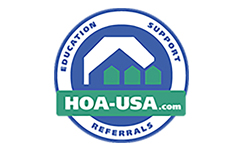Perhaps the first consideration when evaluating sidewalks in an association is who has responsibility. It could be the declarant (builder or developer) prior to transition. It could be the association if the sidewalks are on common areas. It could be a municipality if the streets are public streets. Lastly it may be the homeowner. The board should review the governing documents to determine the association’s responsibilities and if homeowners share any responsibilities.
Sidewalks are likely to be a greater issue for condominium and townhome communities, particularly with private streets and parking lots. However, even in single-family communities, sidewalks to pools, clubhouses, tennis courts, etc., and other common areas will likely be the responsibility of the association. The board should refer to the plat or the officially recorded map to determine if the sidewalks are considered common area.
Once the association determines its responsibilities for sidewalks, it should develop:
- A regular inspection and maintenance schedule.
- A landscape plan that prevents damage from tree roots.
- A review of liability insurance coverage. Associations have been sued for failure to maintain sidewalks in common areas.
- Access features, including curb cuts and ramps, that conform to the Americans with Disabilities Act of 1990.
- An operating budget and reserve fund for maintenance and future improvements.
- A way of communicating any board actions, policies or plans to homeowners.

